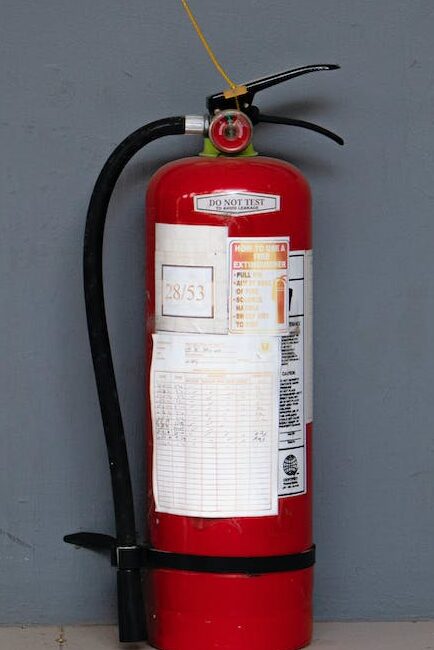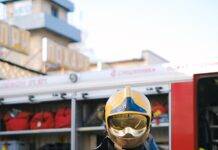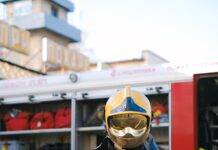
Types of Fire Extinguisher: Your Ultimate Guide to Fire Safety
Introduction
Fire safety is a critical aspect of our lives, and understanding the different types of fire extinguishers is essential for protecting yourself and your property. In this comprehensive guide, we will explore the various types of fire extinguishers available, their uses, and when to use them to effectively combat different types of fires. Let’s dive into the world of fire safety and equip ourselves with the knowledge needed to handle emergencies confidently.
Understanding the Fire Triangle
Before we delve into the specifics of fire extinguishers, it’s crucial to grasp the concept of the fire triangle. Fires require three elements to burn: heat, fuel, and oxygen. Removing any one of these elements can extinguish a fire. Fire extinguishers are designed to disrupt one or more components of the fire triangle, depending on the type of fire they are meant to combat.
Types of Fire Extinguishers
1. Water-Based Fire Extinguishers (Class A)
Water-based fire extinguishers are primarily used to combat Class A fires, which involve ordinary combustible materials like wood, paper, and cloth. They work by cooling down the flames and removing the heat element from the fire triangle.
2. Foam Fire Extinguishers (Class A and B)
Foam fire extinguishers are versatile, suitable for both Class A and Class B fires. Class B fires involve flammable liquids such as gasoline and oil. These extinguishers smother the fire by creating a barrier between the fuel and the oxygen.
3. Carbon Dioxide (CO2) Fire Extinguishers (Class B and Electrical Fires)
CO2 fire extinguishers are effective against Class B fires and electrical fires. They work by displacing oxygen, thus suffocating the fire, and leave no residue behind, making them ideal for use on sensitive electrical equipment.
4. Dry Powder Fire Extinguishers (Class A, B, C)
Dry powder extinguishers are versatile and can be used on Class A, B, and C fires. They work by interrupting the chemical reaction of the fire and can combat fires involving flammable gases (Class C).
5. Wet Chemical Fire Extinguishers (Class K)
Wet chemical extinguishers are designed specifically for kitchen fires involving cooking oils and fats (Class K fires). They create a cooling effect and form a soap-like solution to prevent re-ignition.
6. Clean Agent Fire Extinguishers (Class B and Electrical Fires)
Clean agent extinguishers are suitable for Class B and electrical fires. They extinguish the fire by removing heat and breaking the chain reaction, leaving no residue behind.
Choosing the Right Fire Extinguisher
Selecting the appropriate fire extinguisher for your specific environment is crucial. Consider the type of fire most likely to occur and ensure you have the right extinguisher on hand. Regular maintenance and inspections are also essential to ensure your extinguishers function correctly when needed.
When to Use a Fire Extinguisher
Knowing when to use a fire extinguisher is as important as having one. If a fire is small, contained, and not spreading rapidly, you can attempt to use an extinguisher. However, never risk your safety; if a fire becomes uncontrollable, evacuate immediately and call the fire department.
Conclusion
Fire safety is a shared responsibility, and being informed about the types of fire extinguishers and their uses is a significant step toward protecting lives and property. Remember to choose the right extinguisher, maintain it properly, and use it wisely when necessary. With this knowledge, you can be better prepared to handle fire emergencies.
Classes of Fire as per European Standard
Classes of Fire as per Indian Standard (IS 15683:2018)
Classes of Fire as per British Standard (BS EN) 2
Classes of Fire as per NFPA 10 Standard
Frequently Asked Questions (FAQs)
- How often should I inspect my fire extinguisher?
- Fire extinguishers should be inspected monthly to ensure they are in good working condition.
- Can I use a water-based extinguisher on an electrical fire?
- No, using a water-based extinguisher on an electrical fire can be dangerous. Use a CO2 or clean agent extinguisher instead.
- What is the lifespan of a fire extinguisher?
- Fire extinguishers typically have a lifespan of 10-15 years, but regular inspections are crucial to determine their condition.
- Are there any fire extinguisher training programs available?
- Yes, many organizations offer fire extinguisher training to educate individuals on their proper use.
- Should I attempt to fight a fire on my own or evacuate immediately?
- Always prioritize safety. If a fire is spreading rapidly or you are unsure, evacuate and call the fire department. It’s better to be safe than sorry.
Remember, fire safety is everyone’s responsibility, and being prepared can make a significant difference in emergencies.
























